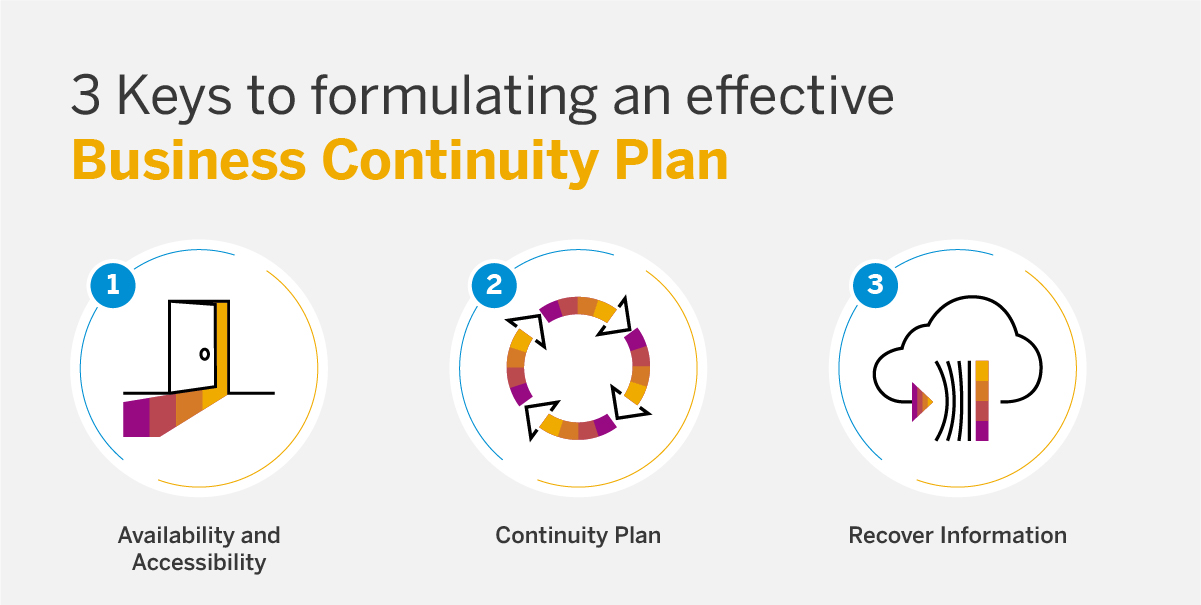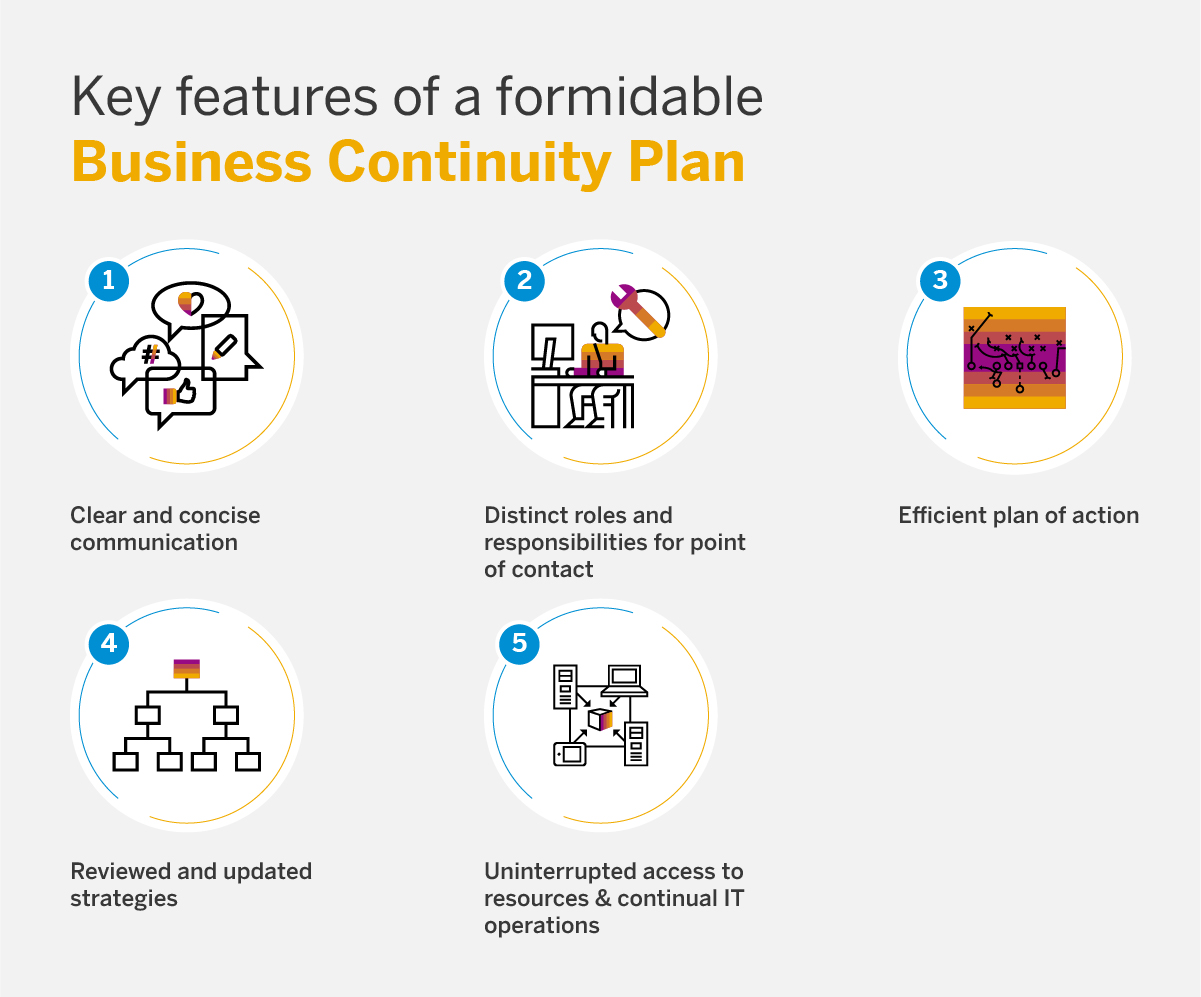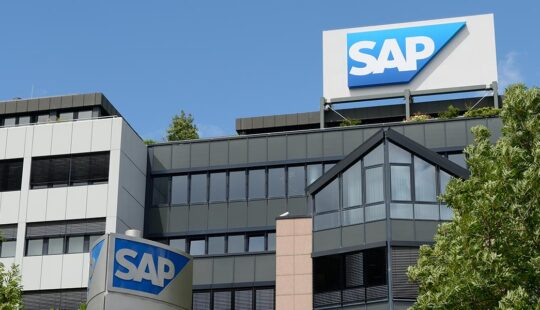“Watch the product life cycle, but more important, watch the market life cycle – Philip Kotler”
In a company’s product and market life cycle, disruptions and obstacles are common. But project leads and the management isn’t always ready for these, and the pandemic is a good example of unprecedented disruption.
Some organizations survived this and have come back stronger, while others have had to struggle. And what made all the difference? A business continuity plan. Business by design is created with fallback options and how to survive every eventuality.
What is Business Continuity Plan?
A business continuity plan (BCP) is a document that details how a company will keep running in the event of an unforeseen service disruption. A BCP is all encompassing and more elaborate than a disaster recovery plan. It needs to account for and include all contingencies for business processes, assets, human resources, and business partners — all components of the company that could be impacted.
When offices worldwide were closed down in February- March 2020 indefinitely, this wasn’t something anyone could have anticipated in the past. The complete work-from-home setup was unthinkable even ten years before, business by design was not meant to be run from coffee shops and couches. Like fire drills, organizations had a template that kicked into place when the government declared lockdowns, and it was prepared for every eventuality.
The beginning of the millennium saw significant expansion in corporate globalization and data accessibility. Businesses considered the entire business continuity process rather than just disaster recovery. Companies learned that if they didn’t have a comprehensive continuity strategy in place, they might lose their clientele and fall behind in the race.
Business continuity planning became more difficult as application architectures such as distributed applications, distributed processing, distributed data, and hybrid computing environments were considered.
3 Key prospects that need to be taken into consideration when formulating a BCP:
- Availability and Accessibility: Modern businesses are run on data, and be it a natural disaster or IT failure, access to information is a MUST, or the industry will crash, and it would have a domino effect.
- Continuity plan: Business by design isn’t meant to stop, especially in industries like Finance, Healthcare, and IT. Operations have to continue despite any hurdles that might come your way.
- Recover information: Backups are the need of the hour because IT disruptions would make any organization inoperable. Two types of backups are necessary: on-site and off-site.

Disruptions: Setbacks or accelerator for growth?
Disruptions cannot be predicted, but you can be prepared for the eventuality.
Some common types of disruptions that organizations can face during their lifetime are mentioned below:
- Environmental disruptions: Often infamously known as the “Act of God”, due to ecological changes, wildfires, cyclones, tsunamis, and earthquakes have become very common. These can harm your physical setup and lead to huge losses in terms of property and resources. Lack of preparedness by the government authorities can also lead to the shutdown of offices. This can negatively impact your services and lead to insurmountable losses. Employees can be adversely affected by this occurrence as well.
- Technological disruptions: A technological blackout is unimaginable in today’s digitalized world. The entire operation will standstill, and these data-sensitive organizations will become vulnerable. This also includes cyberattacks, data breaches, and malware hacks- that can expose company secrets and put the security of the company and its end-users at stake. Today not just the IT organizations but every sector should have multiple backups- a fail-safe method like cloud storage and spread across several nodes.
- Human disruptions: The pandemic has shown how vulnerable and fragile human life is. Millions of people have lost their life. Also, sickness, layoffs, and an employee can quit, and without proper resources in place, it becomes difficult for a department to function smoothly until a replacement is found.
2021: A year of adapting to the future
As we come to the end of the year- one that has been a landmark in many senses: we saw abysmal lows in the form of the second wave of the COVID-19 attack, and then came the highs with the arrival of vaccines and herd immunity, the world is once more opening up.
While offices are slowly beginning to open up and life is going back to normal, there’s anticipation of new waves of the pandemic. Reports of new variants are getting businesses and communities to exercise caution.
A survey conducted by McKinsey with over 200 organizations across various industries has shown that more than 90% of the respondent expect COVID-19 to fundamentally disrupt the way they do business over the next five years. With nearly as many saying the crisis will have a long-term impact on their consumers’ requirements.

More than 60% of the C-suite executives in the survey believe that this will be the most difficult moment of their executive career.

Ensuring seamless running of business in spite of the odds
Customers are in constant need of essential products and services – pandemic or no pandemic. A bank customer needed the help of the service centers when the physical banks were closed. Telecom customers more than ever needed the assistance of customer care services as most of the work was done via mobile, and eCommerce agents were working round the clock to provide support to the people when physical stores were shut or operated for a few hours in a day.
These services could be provided seamlessly because businesses had BCP in place and things kicked into gear. Even though the management, partners, and stakeholders were not present, they could still steer their businesses and satisfy the requirements of their end-users while looking out for the safety of their employees.
What to include in Business Continuity Plan?
Here are the key features of a good BCP, one that caters for all sorts of conceivable eventualities and helps stay prepared to ensure business ‘as usual.’
- Communication
Having a clear and concise communication clause is important to implement because this is the tipping point between chaos and clarity. Some of the key personnel who need to be contacted in times of crisis are:
- Stakeholders
- Key personnel
- Backup site or cloud operation operators
- Resources (equipment, services)
- Emergency responders
- Third-party vendors
- Facilities managers
- Incident response team(s)
Make sure the communication to the public is consistent, honest, and has a tone of authority. The right tone can help prevent panic and minimize your losses (in terms of a drop in share prices, exodus of employees, etc.)
2. Roles and responsibilities and identifying the point of contact
To successfully deal with any disruption, it is important to have strong leadership. The BCP should clearly mention the roles and responsibilities of the point of contact or a BCP committee to manage the crisis efficiently.
3. Plan of action
Everything you’ll need to keep your business running should be outlined in your Business Continuity Plan. Even if some of your essential staff or supervisors are temporarily unavailable, operations should be able to continue.
Your supply chain should be able to cease and resume delivery swiftly. Alternative suppliers and delivery channels should be identified and engaged, and storage alternates for inventory, equipment, and orders in transit should be discussed.
4. Testing and training
An outdated BCP might be worse than having none at all, giving you a false sense of security. Review and update your strategy frequently to reflect changes in your IT environment, business priorities, operational structure, and other factors. Conduct drills involving everything from app recovery to crisis messaging.
5. Uninterrupted access to resources and continual IT operations
Provide options that will allow people to access data and work from anywhere. In the case of an unforeseen disruption, identifying important functions will disclose which procedures are critical to maintaining and running a business. These include:
- Payroll and time tracking
- Revenue operations
- Information security
- Core business functions
- Data protection after recovery
- Identity & access management
The final element is data center continuity. For scale and redundancy, most major enterprises already have many data centers. Having cloud backups and easy accessibility will allow you to continue your operations.

Advantages of Business Continuity Plan
- Helps maintain the trust and faith of the customers
- Establishes an open and confident relationship with employees, and this leads to employee retention, especially in a management position
- It helps in preserving and protecting your brand name.
- Provides valuable business insights and can help mitigate or reduce financial risks and fallouts.
- Protects your supply chain
- Provides an edge over your competition
- Increases compliance with industry regulations
- Helps restart your operation after the disruption.
In today’s world filled with volatility, uncertainty, complexity, and ambiguity, organizations are better off having a well-thought-out business continuity plan to survive disruptions. A plan that provides a blueprint to cater to any and all types of emergencies helping you stay resilient and carry on business ‘as usual.’


